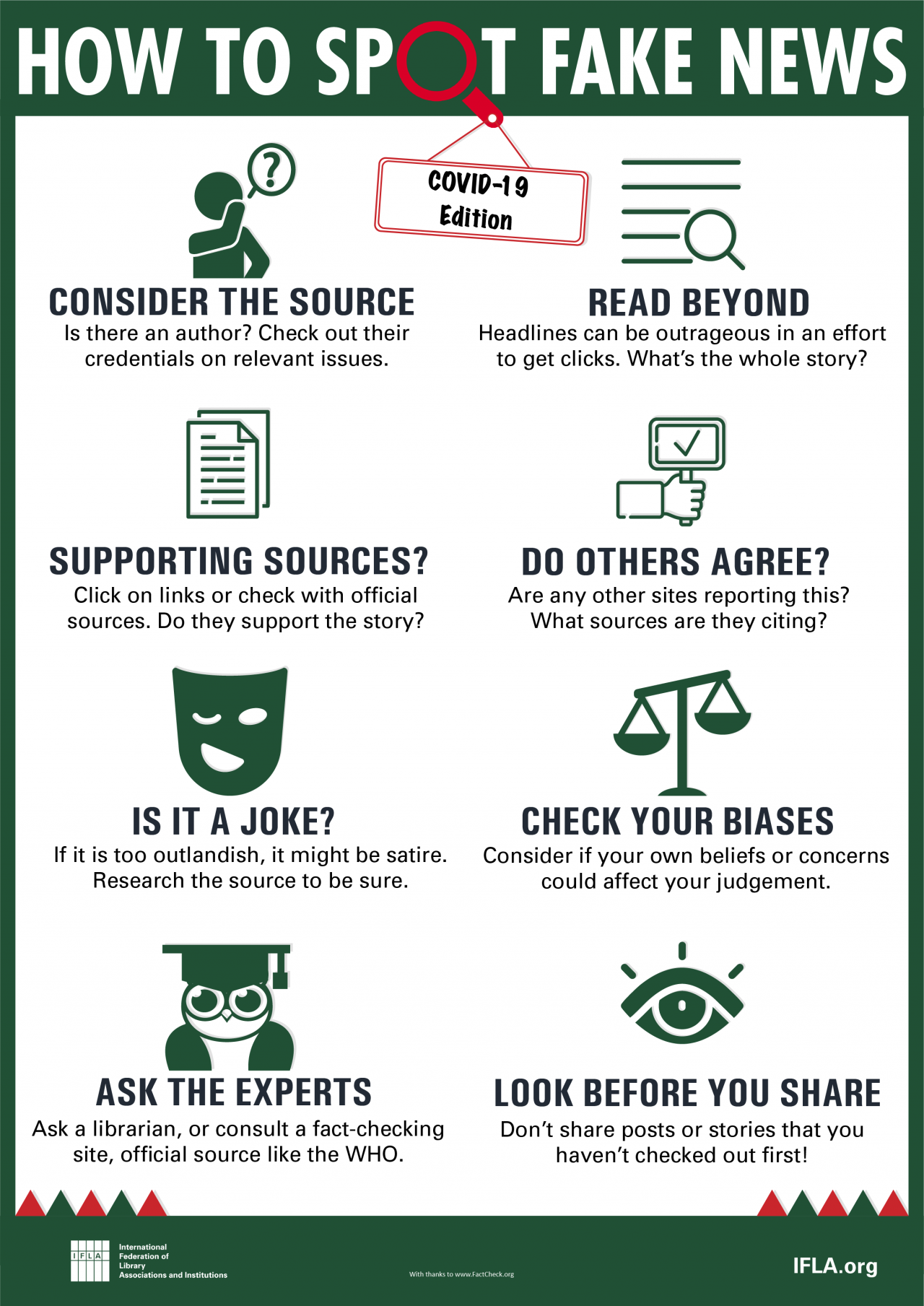UML Library is pleased to announce the launch of a new institutional repository, UMass Lowell RAD (Research, Archives, and Data)!
UML Library is pleased to announce the launch of a new institutional repository, UMass Lowell RAD (Research, Archives, and Data)!
On this page, you can find links to reliable fact-checking websites along with recommended search strategies and suggested eBooks that show how you can sort out misinformation from the facts.
These sites provide a mix of services from fact-checking for news stories to online tools for learning media literacy.
This free online textbook was written in 2017 by Mike Caulfield, director of blended and networked learning at Washington State University Vancouver. Taking inspiration from Sam Wineberg (co-author of "Lateral Reading," below), Caulfield recommends Four Moves and a Habit when checking for the truth of a statement.
Caulfield's Four Moves
Check for previous work
Go upstream to the source
Read laterally
Circle back
Caulfield also recommends users develop the habit to check your emotions when you have a strong reaction (positive OR negative) to a claim.
In 2021, Caulfield updated the text with new streamlined resources, reframing his Four Moves for the free online Check, Please! Starter Course and the high school/ early college curriculum, Ctrl-F Project by CIVIX. Both resources incorporate more recent case studies and use a new acronym to for Caulfield's 4-part strategy: SIFT.
Stop
Investigate the source
Find trusted coverage
Trace claims, quotes, and media to the original context
For more details, follow the link below to access Caulfield's complete textbook online.
This 2019 paper from Teachers College Record recounts a study conducted by Sam Wineberg and Sarah McGrew that compared research habits of professional fact-checkers, historians, and Stanford University students.
In the study, fact-checkers quickly and accurately confirmed or disproved claims with lateral searching (exploring outside resources for evidence). Historians and students, on the other hand, mostly relied on vertical searching (staying within a website to confirm its authenticity) and were often misled or took much longer to find the truth.
Wineberg and McGrew highlight three key lateral reading strategies to successfully evaluate information:
Take Bearings
Look at the context of an author or organization's work (rather than the design) and watch out for coded language
Don't rely on internal descriptions (e.g. "About Us" pages)
Use Lateral Reading
Use new browser tabs to easily search and compare web pages
Verify claims, professional history, or company credentials from authoritative outside sources
Practice "click restraint"
Don't take top ranked Google results for granted (algorithms may promote less relevant results)
Read text previews for clues to find relevant links
Use the text search function (command + F) and hyperlinks to find content in longer pages
For more details, visit the link below and log in with your UMass Lowell account to access the complete paper.
The International Federation of Library Associations and Institutions (IFLA) created this infographic in 2021 to help users spot misinformation about COVID-19. You can use the same strategies to verify information on other topics.

Publication Date: 2019. This book explores the social, political, and moral aspects that impact the creation and distrubution of information. Case studies teach readers how to evaluate online information and responsibly contribute to social media.
Publication Date: 2016. Written by a Columbia University astronomy professor, this book teaches readers to fight misinformation by developing scientific habits like logical reasoning and “precise language.”
University of Massachusetts Lowell
University Library
O'Leary Library: (978) 934-4554 Lydon Library: (978) 934-3208
